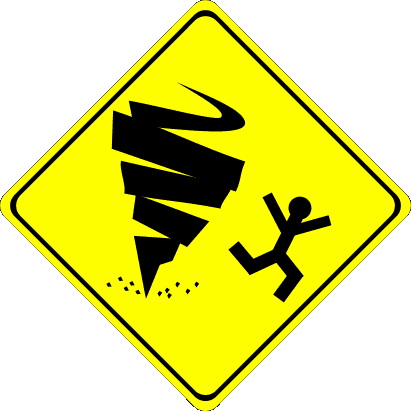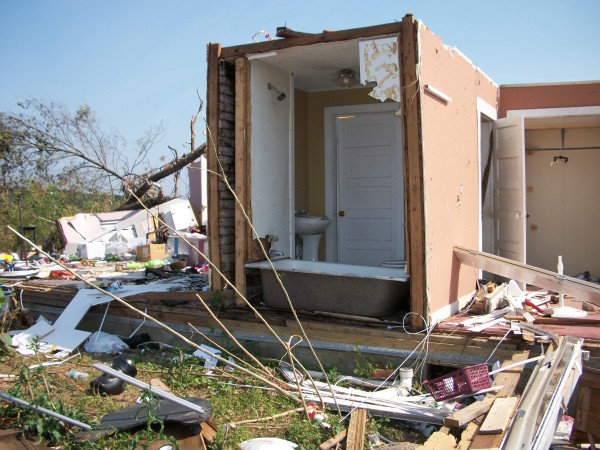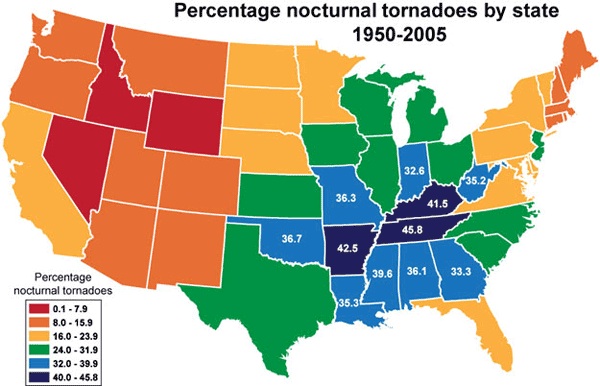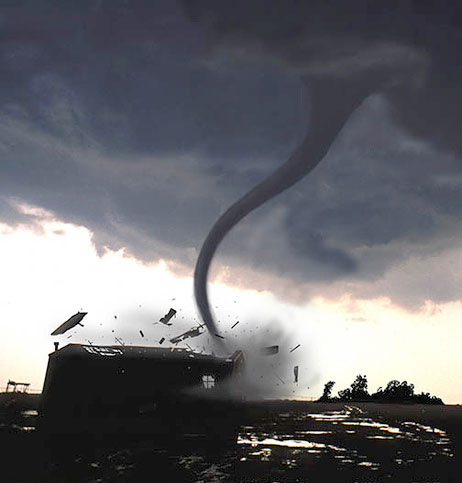
This post outlines what you need to know to stay safe during a tornado. Follow the links below to learn more.
How do I determine a safe spot during a tornado?
If you’re in a house during a tornado.
Do not stay in a mobile home during a tornado
Do not stay in a car during a tornado
If you’re at school or work during a tornado.
If you’re in a shopping center during a tornado.
Here’s why you want and need a weather radio

What is a tornado watch? When a tornado watch is issued, it means conditions are favorable for the formation of this type of storm. A tornado watch means that – in the determination of weather experts – the atmosphere has all of the ingredients it needs to make and produce a tornado. It does not mean imminent storms are on the way, or that a storm has been sighted on the ground. When a tornado watch is issued, you need to do just that: watch the weather. Know where a safe shelter is, and be prepared to act quickly in case a warning is issued.
What is a tornado warning? When a tornado warning is issued, it means a storm is approaching your area. You must take shelter – fast. Tornado warnings are issued when the National Weather Service indicates a storm with strong rotation on Doppler Radar, or if there is confirmation that a tornado is on the ground.
If you are in the tornado’s path, you must immediately drop whatever you are doing and proceed to a safe spot.
I can’t emphasize enough that you should stay alert to the weather in your area. Meteorologists can forecast severe weather events three to five days out. If it is a significant event, meteorologists will automatically send out updates via the Storm Prediction Center and through local National Weather Services so that the media and the public can prepare. If you live in a moderate or high risk area for severe weather, you should take these threats very seriously. If you live in a mobile home, perhaps you should relocate and stay at a friend’s house that is safe and sturdy when storms are forecast for your area.
For more information regarding the difference between a tornado watch and tornado warning, check out this great NOAA video:

How do I determine a safe spot during a tornado? Houses are constructed differently, and many people do not have a basement. You might be in your car, in a mobile home, at work or school, in a shopping center or elsewhere when a tornado strikes. We cannot tell you the precise safest spot for your area; only you can determine that. Be weather aware, and have a plan in mind, especially if you live in a tornado-prone area.
If you live in a place that has tornadoes, you might also want to practice tornado drills with your family or co-workers. Typically, tornado drills are only implemented at school. It would be wise to practice these drills at our homes, businesses, and at amusement parks, sporting events, and shopping centers.
The guide below was put together by Aneela Qureshi of the University of Georgia (see below), with information from NOAA:
If you’re in a house during a tornado.
• Have a designated place to go. The best place is a specially built storm shelter. Next best solution is in a central room (like a bathroom or a closet) in the basement. If you don’t have a basement, the next best place is a central room in the lowest level of the house. Avoid windows, and try to have as many walls between you and the tornado as possible!
• If you locate in a bathroom, get in the bathtub and throw cushions on top of you. Out of the many tornado ravaged areas I visited, the bathtub was always the last thing standing.
• Put together an emergency supply kit, including items such as a battery operated weather radio, flashlight, batteries, first aid items, and bottled water. Keep it in a place you can easily grab it (preferably your designated shelter). Make sure cell phones are fully charged.
• If you have a whistle, have it on you. If you end up being trapped in debris, a whistle could let others know you are alive and need assistance.
• Be able to protect your head! Many tornado-related fatalities are due to head trauma, so have helmets or other sturdy head coverings available.
• Have regular tornado drills so you and your family know exactly what to do and where to go.
• When the tornado warning is issued, get to your safe place immediately! Don’t waste time trying to watch or record the tornado. The most important thing is to keep you and your family safe.

Do not stay in a mobile home during a tornado.
• Mobile homes, even ones that are tied down, are never safe during a tornado!
• Find a storm shelter ahead of time – whether it’s a designated shelter, a nearby friend’s house, etc. Don’t wait until the last minute to do this!
• Leave when you hear a tornado watch is issued and get to your safe place.
• If necessary, be prepared to take shelter in a low area, such as a ditch. Cover your head and watch out for flooding.
Do not stay in a car during a tornado.
• The best thing to do is pull over, get out of your car, and get to a safe shelter, such as a nearby building.
• If no shelter is available, lie down in a low area, such as a ditch. Tornado winds are the lowest right at the ground. Be mindful of other storm-related hazards, such as flooding. Cover the back of your head and neck.
• What about highway overpasses? Tornado movies all seem to have a scene where somebody takes shelter under a bridge or overpass and walks away unscathed. Sounds like a great idea, right? Wrong. Overpasses are actually very dangerous during a tornado. Winds get stronger above ground, and the narrow opening under an overpass can create a wind tunnel, significantly increasing the wind speeds and flinging deadly debris missiles. Three people died, and many more were seriously injured, during the May 3, 1999 tornado outbreak in Oklahoma when they took shelter under highway overpasses. Check out this presentation from the folks at the National Weather Service and National Severe Storms Laboratory for more information.
• Try to avoid traveling if there is a big threat for severe storms and tornadoes!

If you’re at school or work during a tornado.
• Follow the building policies (make sure you know them ahead of time).
• Get to a designated shelter if possible. Otherwise go to the lowest level.
• Stay in the interior away from windows, and avoid large open rooms such as gymnasiums or auditoriums.
• Crouch down low and cover your head.
If you’re in a shopping center during a tornado.
• Find out ahead of time if a shopping center has a severe weather plan, and follow the plan.
• Get to a designated shelter if possible. Otherwise go to the lowest level.
• Stay in the interior away from windows, and avoid large open rooms.
• Most stores will take you to the center of the building away from shelves that could hurt you. A bathroom is a great alternative.
• If you know there is a good risk of severe weather in your area, avoid the roads and shopping. This is the best preventative measure you can take to insure your safety.
• Remain calm. Stay in your shelter until the storm has passed.
• Be mindful of other weather hazards, such as hail, flooding and lightning.
• Use a flashlight, not candles (in case of broken gas pipes).
• Check people for injuries. Begin first aid, or get help if necessary.
• If your home/shelter is no longer a safe place to be, go somewhere that is. You may have to stay where you are until help arrives. Keep a whistle in your emergency kit in case you need to signal for help.
• Avoid downed power lines, debris, fallen trees and other hazards.

Here’s why you want and need a weather radio
So now that you know how to plan for tornadoes, what do you think is the best way to receive tornado warnings? Do you own a NOAA weather radio? Or do you, like many other people, depend on tornado sirens?
Time and time again, after a tornado hits we hear people saying:
I didn’t hear the sirens so I didn’t know we were in danger!
According to Jim Allsopp of the National Weather Service office in Chicago, Illinois:
Sirens are great. They serve a purpose, but they should not be your primary method of receiving warnings.
Yes, sirens are loud. They can be heard very clearly if you are outside. Sirens are not designed to be heard indoors or to wake people up in the middle of the night. Some of you are probably asking at this point:
Night? Don’t most tornadoes happen in the late afternoon or evening?
A lot of them do happen in afternoon or evening, but tornadoes can strike at night as well. Most U.S. states experience nighttime tornadoes, with the mid-South in the U.S. experiencing the greatest frequency. According to researchers at Northern Illinois University, these nighttime tornadoes are 2.5 times more likely to kill as those during the day. Between 1950-2005, 42% of killer tornadoes occurred at night. If you are home sleeping when one of these tornadoes hits, there is no way an outdoor siren is going to wake you up. Get a weather radio, or a weather radio app for your phone such as iMapWeather. You can get a good one for around $30. Program it to go off when your area is under a watch or warning. Keep it by your bedside so it will wake you up, and you can get to shelter immediately.
If you want to learn more about general weather safety, please visit the NWS Safety Guide. It includes ways of protecting yourself from other elements such as snow, heat, lightning, and floods.

A special thank you goes out to Aneela Qureshi who is a Ph.D. student in the Department of Geography at the University of Georgia. She contributed greatly to this article. About Aneela Qureshi: Qureshi has a strong background in both meteorology and education, along with extensive experience teaching about weather and weather safety to groups ranging from pre-K to adult, in both formal and non-formal settings (including one of the top 10 children’s science museums in the U.S.). Qureshi is very interested in weather safety, and her research is in winter weather hazards and preparedness in Georgia, especially what K-5 students know about these topics and how what they learn impacts their families’ safety behaviors.
Bottom line: Spring is here and that means we are in tornado season. This post outlines what you need to know to stay safe during a tornado: difference between watches and warning, safest places to be, what to do if you are not in a safe place, why you need a weather radio. Stay safe, everyone!











